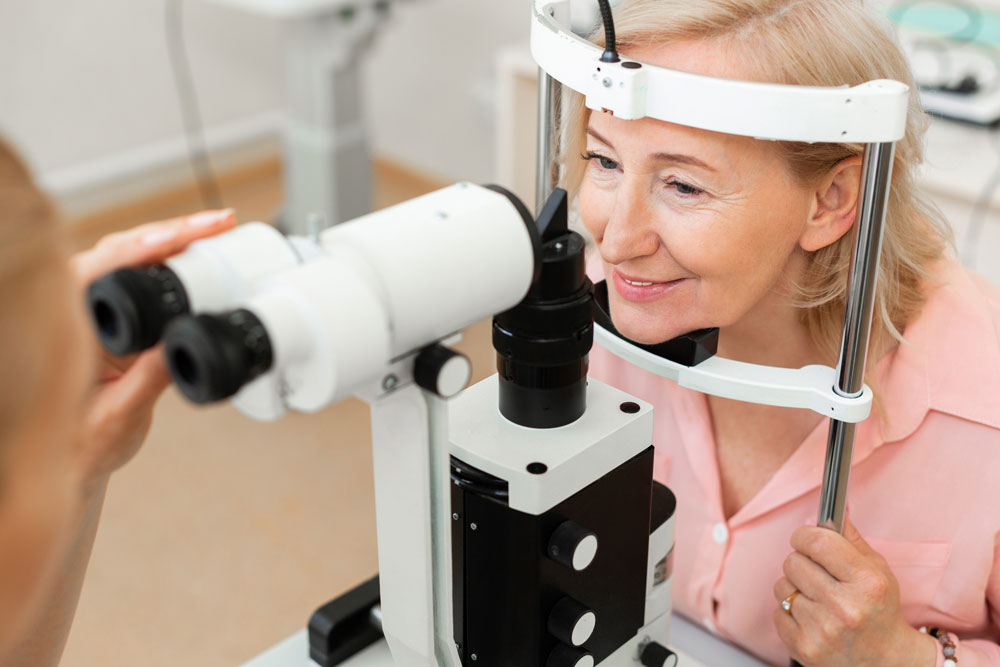Glaucoma can be difficult to detect without a regular eye exam until a significant amount of vision is lost. The reason it is so dangerous is that most people with glaucoma have no symptoms. Many feel no pain, and most have 20/20 visual acuity, although possibly only straight-ahead vision. But left untreated, glaucoma can slowly steal your peripheral vision until you think you are peering through a tunnel (at best) or until you go blind (at worst). Most frightening, 70% of the vision lost to glaucoma occurs before diagnosis.
Conventional biomedicine focuses strictly and exclusively on treating eye pressure but does not address the other factors that can lead to progressive vision loss. Although acupuncture can help lower IOP and help people reduce the need for eye pressure meds, our approach focuses on preserving the health and integrity of the optic nerve by managing the host of underlying factors that contribute to degeneration of the optic nerve.
Damage to the Optic Nerve
The development of glaucoma is brought about by damage to the optic nerve, sometimes as a result of increased pressure in the clear fluid that circulates in the inside of the eye between the cornea and the lens.
The anterior (front) chamber of the eye is bounded by the lens and iris behind and the cornea in front. The ciliary epithelium behind the upper eyelid secretes aqueous humour, a clear liquid that fills the anterior chamber, which provides oxygen and nutrients to the front of the eye. Aqueous humor is produced continuously and then exits the eyes through a mesh of tiny holes behind the lower eyelid, called the trabecular meshwork.
While it had been logical to assume that increased pressure would restrict the flow of blood to the optic nerve, causing damage, Quigley, et al found (1980) that might not be so. Rather, he and his colleagues determined that mechanical compression of individual nerve fiber bundles was a more likely cause.
It is now known that the spongy trabecular meshwork near the lens at the front of the eye becomes clogged and does not permit correct outflow of aqueous humor into the normal body circulation, giving rise to increased intraocular pressure, which swells, sending pressure to the vitreous, and eventually starving the nerve cells of nutrients. The nerves that comprise peripheral vision fail first due to restricted blood flow and/or mechanical compression of nerve fibers.
Furthermore, researchers report that the little cilia, called primary cilia, that extend out from trabecular meshwork cell walls are influenced by biochemicals called phosphoinositides that regulate balance in the aqueous humor. If there is damage to these cilia, perhaps due to the meshwork being clogged, then messaging is interrupted and aqueous humor balance is disrupted.
It is further understood that damage caused by elevated eye pressure, the amount of damage, the amount of pressure and the duration of pressure are not perfectly correlated. There may be other factors involved, in part, depending on whether the head of the optic nerve, the ganglion cells and other parts of the optic nerve are damaged and to what extent.
Glaucoma is now defined as a collection of diseases causing optic nerve damage. The diagnosis is no longer determined only on whether this pressure (Intraocular Pressure or IOL) is high.
Conventional treatment depends on the nature and severity of each case. Commonly, open angle glaucoma is treated with eye drops or oral medications. In the event this treatment does not lower the eye pressure inside the eye, laser therapy or surgery may be considered necessary.
Underlying Causes of Glaucoma:
Neurodegeneration
Researchers now view glaucoma as a disease of the brain (a neurodegenerative disease) rather than simply an eye disease. Recent research has shown that the complex connection between the eye and the brain is an important key to the disease. The retina and optic nerve are both made up of brain tissue and are part of the brain. Glaucoma shares a number of features with degenerative brain diseases such as Alzheimer’s, Parkinson’s, and Lou Gehrig’s disease. In these diseases, age and family history are major risk factors, and specific areas of the brain are damaged over time.
In glaucoma, changes occur in the back of the eyes. The optic nerve continues to be a focus for researching the underlying causes of glaucoma. Whether due to mechanical trauma, decreased blood flow, or other causes, optic nerve axon injury causes changes in retinal ganglion cells, eventually resulting in cell death. Researchers have observed that specific areas of injured optic nerve axons and retinal ganglion cell loss match the peripheral vision damage from glaucoma.
Neuroinflammation
Glaucoma, especially if acute, may be largely an inflammatory condition. Researchers believe that high intraocular pressure triggers an inflammatory response. In experiments, inflammation occurs in the central nervous system and at early stages of glaucoma. Inhibiting the process through which inflammation develops appears to protect the neurons from damage.
Researchers have been investigating the precise role of neuroinflammation in causing glaucoma. Cells known as microglia behave like sensors to damage the nervous system and play a role in the inflammatory response. The process contributes to beta-amyloid accumulations, implicated in Alzheimer’s disease. Similarly, the eye, actually part of the brain, also accumulates beta-amyloid in the retina and optic nerve. Microglia activity and the inflammatory response are linked to protein clumping and nerve cell degeneration.
Oxidative Stress
Increased oxidative stress is a risk factor. Antioxidant drugs and nutrients that reduce enzymes involved in oxidation are reported to be helpful in animals with glaucoma. Although targeting IOP has been a prime therapy, researchers are increasingly looking to provide antioxidants for targeting oxidative stress. Damage to DNA in the tissue layers that regulate aqueous humor outflow is linked to oxidative damage, as well as damage to neurons and the optic nerve.Among other results, oxidative stress leads to imbalances in the biochemicals that control relaxation or constriction of blood cells through regulation of the vascular endothelium (a single layer of cells lining blood vessels).
Inadequate blood flow due to blood vessel dysfunction at the optic disc (the point where optic nerves exit the eye), or problems in regulation of blood flow to the optic disc. Other research finds that problems in blood circulation behind the eyeball contribute to progression of glaucoma.
Harmful drugs
Some medications actually increase your chances of developing glaucoma like steroids.
Computer use
Computer use can have a significant impact on the risk of developing glaucoma, particularly for individuals who spend prolonged periods on the computer. Japanese researchers conducted a study that revealed a higher susceptibility to glaucomatous visual field abnormalities among individuals who engage in heavy computer use throughout the day. This finding is especially relevant for those who are myopic, or nearsighted. The study’s results highlight the potential association between the intensity of computer use and the increased risk of glaucoma. It is crucial to consider this information, as it emphasizes the importance of taking appropriate measures to protect our eyes when engaging in prolonged computer usage.
Thyroid
Have your thyroid checked, since some causes of glaucoma have been tied to low thyroid functioning.
Genetic Mutations
2009 research found that simultaneous mutations of the WDR36 and STI1 gene are causal factors for glaucoma.
Mercury, Manganese
2015 research has identified a connection between high levels of mercury and glaucoma and between low levels and manganese and lower rates of glaucoma.
Estrogen Insufficiency
Some research suggests that due to surgery to remove ovaries before menopause, subsequent estrogen deficiencies may increase the risk of developing glaucoma. Women who had the surgery (oophorectomy) before age 43 had a much higher risk of developing glaucoma, even when they were treated with estrogen.
Alzheimer’s disease
Researchers have found a likely link between Alzheimer’s and glaucoma, with Alzheimer’s patients being at greater risk of developing glaucoma.Retinal vein occlusion creates an increased risk of developing glaucoma.
Smoking tobacco creates a much larger risk for the user to develop glaucoma. Smoking tobacco creates a much larger risk for the user to develop glaucoma.
Mitochondrial dysfunction
Researchers propose that a mitochondrial complex I defect is linked to the deterioration of trabecular meshwork cells, and that antioxidants and MPT (mitochondrial permeability transition inhibitors) can reduce such degeneration.
Homocysteine
High levels of homocysteine have also been identified as a risk factor for open-angle glaucoma. Other studies link high levels of homocysteine to the onset of pseudoexfoliation glaucoma.
Recommended Supplements:
-
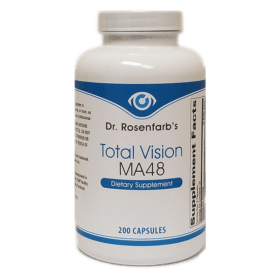
Total Vision MA48
$55.00 Add to cart -
Sale!
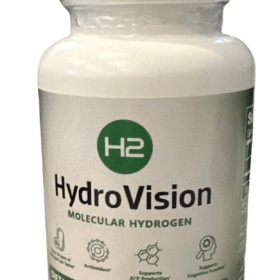
Hydro Vision – H2 Vision – Molecular Hydrogen Tablets
Original price was: $60.00.$49.00Current price is: $49.00. Add to cart -

CannaVision Oil 2500mg
$99.00 Add to cart -
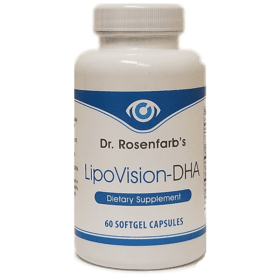
LipoVision-DHA
$30.00 Add to cart -
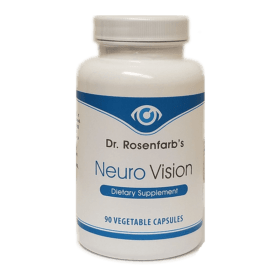
Neuro Vision
$70.00 Add to cart -

CannaVision Oil 5000MG
$149.00 Add to cart -
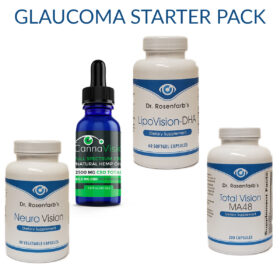
Glaucoma Starter Pack
$274.00 Add to cart

